
Alpine Majesty: A 10-Day Rail Journey Through Austria and Switzerland
 10 Day Tour of Vienna, Salzburg, Zurich and Interlaken
10 Day Tour of Vienna, Salzburg, Zurich and Interlaken
Overview
Trip Map
Itinerary
Inclusions
Reviews







10 Days 9 Nights
Best Time: Jan-Dec
Nature Lovers
Outdoor Activities
Experience a breathtaking 10-day adventure by train through the heart of Austria and Switzerland, showcasing some of Europe's most stunning landscapes and cultural treasures. From the historical elegance of Vienna and Salzburg to the scenic beauty of Zurich and Interlaken, each destination offers a unique blend of awe-inspiring experiences. Revel in private guided tours and self-guided hikes by cable car, while enjoying the ease of travel with the detailed guidance provided in our mobile app. Whether ascending Alpine peaks or exploring vibrant cities, this itinerary promises panoramic views and unforgettable moments.
- Ascend by cable car to hike Alpine peaks such as the Untersberg & Mt. Pilatus.
- Wander through Vienna's historic center on a guided tour, unveiling the city's imperial past.
- Explore Salzburg's Altstadt with a local guide, where music and history echo through the streets.
- Experience Zurich's charm with a private tour of the Old Town's cobblestone lanes.
- Cruise across Lake Thun, soaking in the Swiss Alps' majestic panoramas.
Experience a breathtaking 10-day adventure by train through the heart of Austria and Switzerland, showcasing some of Europe's most stunning landscapes and cultural treasures. From the historical elegance of Vienna and Salzburg to the scenic beauty of Zurich and Interlaken, each destination offers a unique blend of awe-inspiring experiences. Revel in private guided tours and self-guided hikes by cable car, while enjoying the ease of travel with the detailed guidance provided in our mobile app. Whether ascending Alpine peaks or exploring vibrant cities, this itinerary promises panoramic views and unforgettable moments.
- Ascend by cable car to hike Alpine peaks such as the Untersberg & Mt. Pilatus.
- Wander through Vienna's historic center on a guided tour, unveiling the city's imperial past.
- Explore Salzburg's Altstadt with a local guide, where music and history echo through the streets.
- Experience Zurich's charm with a private tour of the Old Town's cobblestone lanes.
- Cruise across Lake Thun, soaking in the Swiss Alps' majestic panoramas.

Hofburg Palace
Castles & Chateaux

Schönbrunn Palace & Zoo
Parks & Gardens

Hohensalzburg Fortress
Castles & Chateaux

Old Town
Architecture

Fraumunster
Churches & Monasteries

Lake Zurich
Natural Beauty

Unterseen
Small Towns

Interlaken Monastery & Castle
Castles & Chateaux

Hohematte Park
Natural Beauty
Must see sights

Hofburg Palace
Castles & Chateaux

Schönbrunn Palace & Zoo
Parks & Gardens

Hohensalzburg Fortress
Castles & Chateaux

Old Town
Architecture

Fraumunster
Churches & Monasteries

Lake Zurich
Natural Beauty

Unterseen
Small Towns

Interlaken Monastery & Castle
Castles & Chateaux

Hohematte Park
Natural Beauty
Starting from
$3725
per person
 Not included
Not included Secure Your Customizable Trip
Enter your details to embark on a journey that can be tailored just for you.
Start
Travelers
0 travelers
Add Room
Remove Room
Preferred Hotel Stars
Select Hotel Stars
Craft Your Own Itinerary
Select your interests and destinations for a trip plan inspired by you.
10-Day Switzerland & Austria Trip - Map & Itinerary
Enable/Disable Map Scrolling
Click To Make Map Interactive

10-Day Switzerland & Austria Trip Timeline
 Edit Details
Edit DetailsArrival
2 nights
Vienna
Austria
Train: 2.5h
2 nights
Salzburg
Austria
Train: 5.5h
2 nights
Zurich
Switzerland
Train: 2h
3 nights
Interlaken
Switzerland
Departure
Day-By-Day Itinerary of 10-Day Switzerland & Austria Trip

Day 1
Arrive Vienna
Day 1
Arrive Vienna




To Be Determined
Taxi Transfer to Hotel
Vienna has one main airport, Vienna International Airport, where almost all visitors arrive. Taxis are available directly at the terminal exit, or you can arrange a private transfer for added convenience. Uber is also available to those who have the app.

Day 1
Arrive Vienna


Day 1
Arrive Vienna





To Be Determined:
Taxi Transfer to Hotel
Mid-Day/Afternoon:
Ring Street
Afternoon/Late Afternoon:
Inner City
Early Evening:
Hip Vienna


Day 2
Vienna
Day 2
Vienna




9:00 AM - 11:30 AM
Guided Walk of the Inner City
This tour takes you back in history to explore the Vienna that stood within the old city walls. You will learn about the humble beginnings of Vienna before it became the capital of a great empire and one of the most important cities in Europe. You will discover how Vienna's early inhabitants lived and how they left their mark on the city and its beautiful Medieval, Renaissance, and Baroque architecture.

Day 2
Vienna



Day 3
Vienna to Salzburg
Day 3
Vienna to Salzburg





Morning
Karlskirche & Belvedere Palace
Two of Vienna's greatest architectural treasures lie just beyond the Ring Street - the Belvedere Palace and the Karlskirche (St. Charles's Church). Often missed by visitors, these Baroque wonders represent Austria at the peak of its prestige and power and deserve to be on every visitor's list.

Belvedere Palace
Stroll the Belvedere's gardens, and venture inside the palace for a "Kiss".
Show More

Karlskirche
Many argue that this baroque church is as beautiful as St. Peter's - see it and decide for yourself.
Show More

Belvedere Palace
Stroll the Belvedere's gardens, and venture inside the palace for a "Kiss".
Show More

Karlskirche
Many argue that this baroque church is as beautiful as St. Peter's - see it and decide for yourself.
Show More

Belvedere Palace
Stroll the Belvedere's gardens, and venture inside the palace for a "Kiss".
Show More

Karlskirche
Many argue that this baroque church is as beautiful as St. Peter's - see it and decide for yourself.
Show More
prev
next

Day 3
Vienna to Salzburg


Belvedere Palace
 Highlight of Karlskirche & Belvedere Palace
Highlight of Karlskirche & Belvedere PalaceStroll the Belvedere's gardens, and venture inside the palace for a "Kiss".
Two Baraque palaces are connected by a French-style, three-level garden which features delightful fountains. Originally built as a summer residence of Prince Eugene, it now houses the Belvedere Museum where you will find Gustav Klimt's most famous work - The Kiss.

Karlskirche
 Highlight of Karlskirche & Belvedere Palace
Highlight of Karlskirche & Belvedere PalaceMany argue that this baroque church is as beautiful as St. Peter's - see it and decide for yourself.
Built between 1716-1737, Emperor Charles VI intended the church to be a thanksgiving for the end of a plague epidemic and dedicated the church to St. Charles Borromeo, who is revered for his care of plague victims. St. Charles was also his namesake, meaning that the church's name evokes the emperor's memory as much as the saint's, which was no accident. Indeed, the two columns in front of the church are meant to represent imperial power.

Belvedere Palace
 Highlight of Karlskirche & Belvedere Palace
Highlight of Karlskirche & Belvedere PalaceStroll the Belvedere's gardens, and venture inside the palace for a "Kiss".
Two Baraque palaces are connected by a French-style, three-level garden which features delightful fountains. Originally built as a summer residence of Prince Eugene, it now houses the Belvedere Museum where you will find Gustav Klimt's most famous work - The Kiss.

Karlskirche
 Highlight of Karlskirche & Belvedere Palace
Highlight of Karlskirche & Belvedere PalaceMany argue that this baroque church is as beautiful as St. Peter's - see it and decide for yourself.
Built between 1716-1737, Emperor Charles VI intended the church to be a thanksgiving for the end of a plague epidemic and dedicated the church to St. Charles Borromeo, who is revered for his care of plague victims. St. Charles was also his namesake, meaning that the church's name evokes the emperor's memory as much as the saint's, which was no accident. Indeed, the two columns in front of the church are meant to represent imperial power.

Belvedere Palace
 Highlight of Karlskirche & Belvedere Palace
Highlight of Karlskirche & Belvedere PalaceStroll the Belvedere's gardens, and venture inside the palace for a "Kiss".
Two Baraque palaces are connected by a French-style, three-level garden which features delightful fountains. Originally built as a summer residence of Prince Eugene, it now houses the Belvedere Museum where you will find Gustav Klimt's most famous work - The Kiss.

Karlskirche
 Highlight of Karlskirche & Belvedere Palace
Highlight of Karlskirche & Belvedere PalaceMany argue that this baroque church is as beautiful as St. Peter's - see it and decide for yourself.
Built between 1716-1737, Emperor Charles VI intended the church to be a thanksgiving for the end of a plague epidemic and dedicated the church to St. Charles Borromeo, who is revered for his care of plague victims. St. Charles was also his namesake, meaning that the church's name evokes the emperor's memory as much as the saint's, which was no accident. Indeed, the two columns in front of the church are meant to represent imperial power.
prev
next

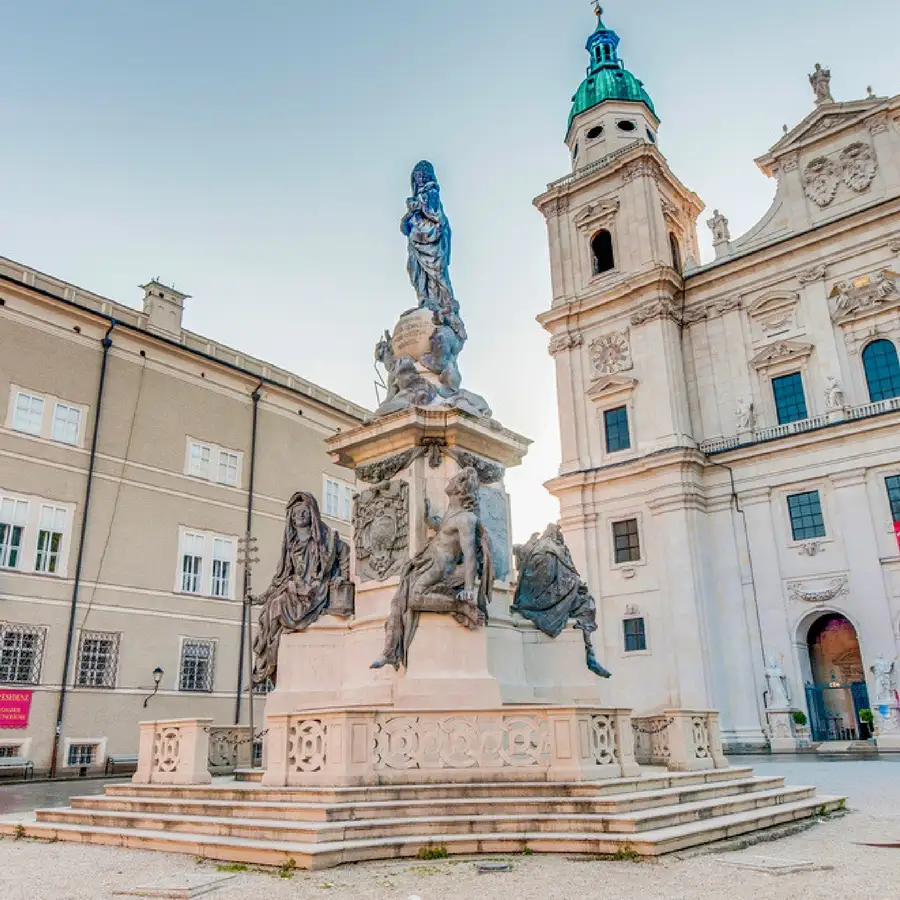
Day 4
Salzburg
Day 4
Salzburg





9:00 AM - 11:30 AM
Guided Walking Tour of Salzburg
Salzburg is simply overwhelming in all the best ways. It is alive with fascinating history, grandiose and sublime architecture fills every street and square, culture and music permeate the atmosphere, and it is surrounded by breath-taking natural scenery. This guided tour with a local will provide the context needed to bring all of this beauty into perspective, and to connect the physical city to its history, culture, and environment.

Mozartplatz
One of several grand squares in the center of Altstadt in Salzburg.
Show More

Salzburg Cathedral
Visit Salzburg's largest and most impressive church.
Show More

Mozartplatz
One of several grand squares in the center of Altstadt in Salzburg.
Show More

Salzburg Cathedral
Visit Salzburg's largest and most impressive church.
Show More

Mozartplatz
One of several grand squares in the center of Altstadt in Salzburg.
Show More

Salzburg Cathedral
Visit Salzburg's largest and most impressive church.
Show More
prev
next

Day 4
Salzburg

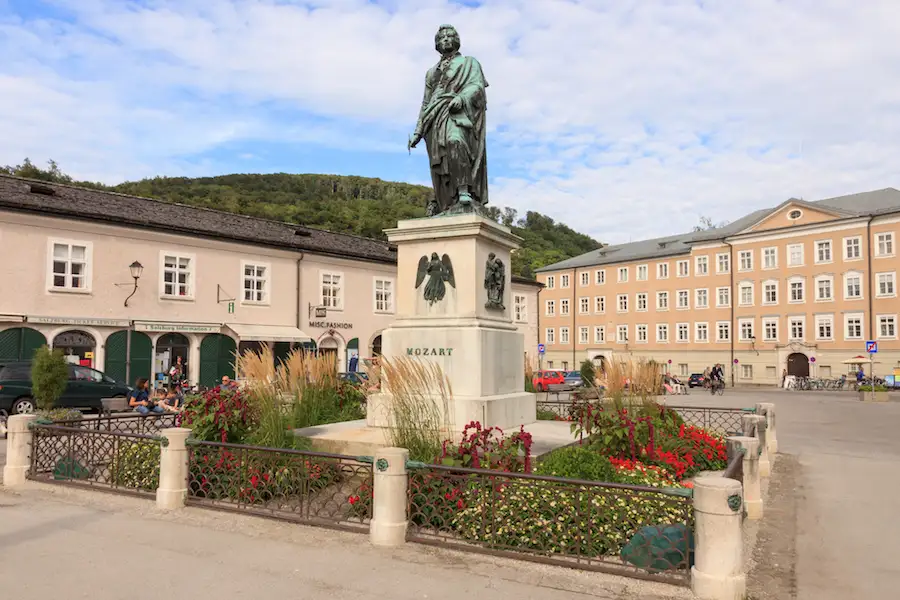
Mozartplatz
 Highlight of Guided Walking Tour of Salzburg
Highlight of Guided Walking Tour of SalzburgOne of several grand squares in the center of Altstadt in Salzburg.
One of several grand squares in the center of Altstadt in Salzburg. In the Mozartplatz you can find a statue of the famous composer.

Salzburg Cathedral
 Highlight of Guided Walking Tour of Salzburg
Highlight of Guided Walking Tour of SalzburgVisit Salzburg's largest and most impressive church.
The current cathedral was built between 1614-1628 and is a masterpiece of baroque architecture. The cathedral was largely destroyed by an Allied bomb in WWII but was restored by 1959. One of the most significant treasures in the cathedral is the Baptismal Font, which was cast in 1321 and rests on copper lions dating back to the 1100s.

Mozartplatz
 Highlight of Guided Walking Tour of Salzburg
Highlight of Guided Walking Tour of SalzburgOne of several grand squares in the center of Altstadt in Salzburg.
One of several grand squares in the center of Altstadt in Salzburg. In the Mozartplatz you can find a statue of the famous composer.

Salzburg Cathedral
 Highlight of Guided Walking Tour of Salzburg
Highlight of Guided Walking Tour of SalzburgVisit Salzburg's largest and most impressive church.
The current cathedral was built between 1614-1628 and is a masterpiece of baroque architecture. The cathedral was largely destroyed by an Allied bomb in WWII but was restored by 1959. One of the most significant treasures in the cathedral is the Baptismal Font, which was cast in 1321 and rests on copper lions dating back to the 1100s.

Mozartplatz
 Highlight of Guided Walking Tour of Salzburg
Highlight of Guided Walking Tour of SalzburgOne of several grand squares in the center of Altstadt in Salzburg.
One of several grand squares in the center of Altstadt in Salzburg. In the Mozartplatz you can find a statue of the famous composer.

Salzburg Cathedral
 Highlight of Guided Walking Tour of Salzburg
Highlight of Guided Walking Tour of SalzburgVisit Salzburg's largest and most impressive church.
The current cathedral was built between 1614-1628 and is a masterpiece of baroque architecture. The cathedral was largely destroyed by an Allied bomb in WWII but was restored by 1959. One of the most significant treasures in the cathedral is the Baptismal Font, which was cast in 1321 and rests on copper lions dating back to the 1100s.
prev
next


Day 5
Salzburg to Zurich
Day 5
Salzburg to Zurich





Early Morning/Morning
Untersberg Peak
The nearly 6,000-foot high Untersberg is Salzburg's nearest Alpine Mountain, and a visit to its peak is the perfect way to experience the Alps without traveling too far. Don't worry, there's no need to bring your climbing gear. You can take a bus from Salzburg to the base of the mountain, and then take an exhilarating cable lift ride all the way to the limestone summit. There you will find a stupendous view of the Alps spread out before you, and if you feel like wandering a bit, a network of rocky trails spreads out from the summit. The Salzburg card covers both the bus ride to the lift (it's the last stop of bus line #25) and the cable car tickets!

Day 5
Salzburg to Zurich


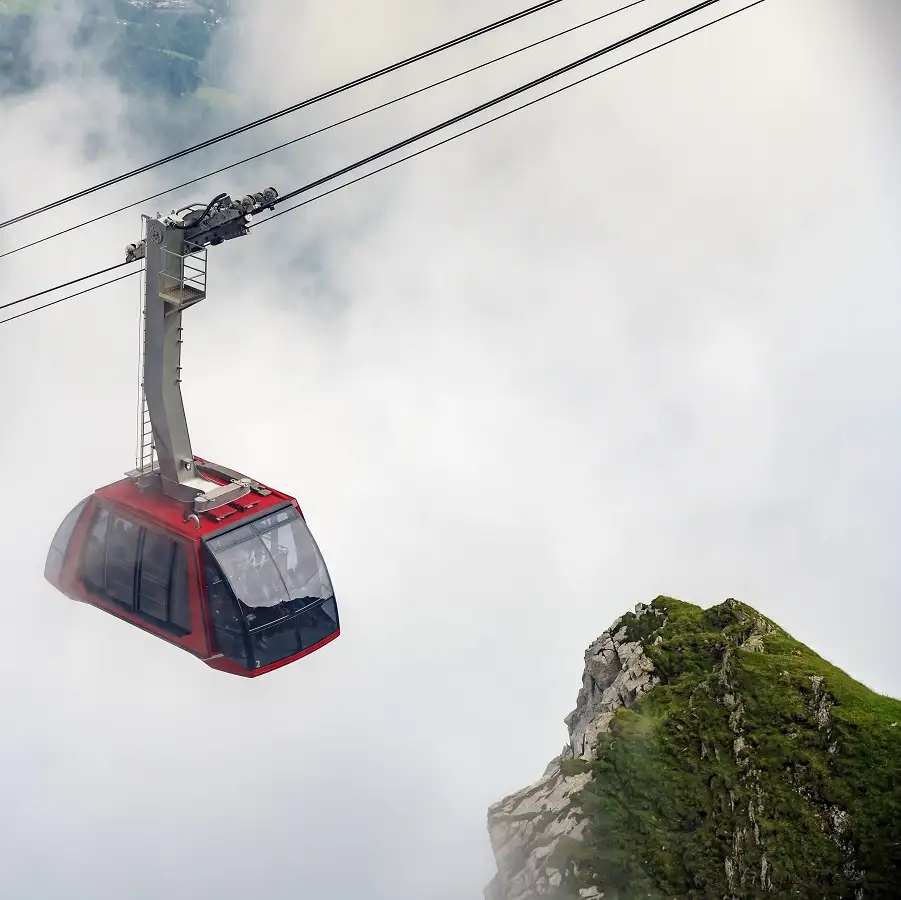
Day 6
Zurich
Day 6
Zurich



Early Morning to Mid-Day
Mt Pilatus
In summer months, you can ride the steepest rack-railway in the world at a gradient of nearly 48 percent from Alpnachstad up the giant mountain of Mt Pilatus that looms over the city of Lucerne. In winter you can glide up the other side of the mountain on a cable car from Kriens. The highest point, Tomlishorn, with superlative views of Lake Lucerne, is only 30min on foot from the hotels and restaurants near the top.

Kriens-Pilatus Cable Car Station
Show More
Show More


Kriens-Pilatus Cable Car Station
Show More
Show More


Kriens-Pilatus Cable Car Station
Show More
Show More


Kriens-Pilatus Cable Car Station
Show More
Show More


Kriens-Pilatus Cable Car Station
Show More
Show More

prev
next

Day 6
Zurich


Kriens-Pilatus Cable Car Station
 Highlight of Mt Pilatus
Highlight of Mt Pilatus

Kriens-Pilatus Cable Car Station
 Highlight of Mt Pilatus
Highlight of Mt Pilatus

Kriens-Pilatus Cable Car Station
 Highlight of Mt Pilatus
Highlight of Mt Pilatus

Kriens-Pilatus Cable Car Station
 Highlight of Mt Pilatus
Highlight of Mt Pilatus

Kriens-Pilatus Cable Car Station
 Highlight of Mt Pilatus
Highlight of Mt Pilatus
prev
next


Day 7
Zurich to Interlaken
Day 7
Zurich to Interlaken




Morning
West Bank, Self-Guided
A wander around the West Bank of Zürich's Limmat River will help you experience the city's development over the centuries, from its iconic Fraumünster church, the rise of its famous banking industry around Paradeplatz, its associations with the Irish writer James Joyce, and its impact on modern sporting history at the FIFA World Football Museum.

James Joyce Foundation
Museum dedicated to the great Irish writer, James Joyce, wrote Ulysses during his wartime exile in Zurich from 1915-19
Show More

FIFA World Football Museum
Modern museum with over 1000 displays on football (soccer)
Show More

Schweizerisches Landesmuseum (Swiss National Museum)
Museum displaying Swiss history
Show More

James Joyce Foundation
Museum dedicated to the great Irish writer, James Joyce, wrote Ulysses during his wartime exile in Zurich from 1915-19
Show More

FIFA World Football Museum
Modern museum with over 1000 displays on football (soccer)
Show More

Schweizerisches Landesmuseum (Swiss National Museum)
Museum displaying Swiss history
Show More

James Joyce Foundation
Museum dedicated to the great Irish writer, James Joyce, wrote Ulysses during his wartime exile in Zurich from 1915-19
Show More
prev
next

Day 7
Zurich to Interlaken


James Joyce Foundation
 Highlight of West Bank, Self-Guided
Highlight of West Bank, Self-GuidedMuseum dedicated to the great Irish writer, James Joyce, wrote Ulysses during his wartime exile in Zurich from 1915-19
Museum dedicated to the great Irish writer, James Joyce, wrote Ulysses during his wartime exile in Zurich from 1915-19

FIFA World Football Museum
 Highlight of West Bank, Self-Guided
Highlight of West Bank, Self-GuidedModern museum with over 1000 displays on football (soccer)
Covering three floors in total, the museum traces the history of the game, FIFA, and both men's and women's World Cup competitions. Football junkies will delight in the details and memorabilia like old programs, shirts, boots and footballs, and even an unopened bottle of champagne from England's 1966 World Cup celebrations.

Schweizerisches Landesmuseum (Swiss National Museum)
 Highlight of West Bank, Self-Guided
Highlight of West Bank, Self-GuidedMuseum displaying Swiss history
Housed in a purpose-built mock-Gothic castle, the museum is often visited just to marvel at its architecture, but actually, this massive building has such superbly presented state-of-the-art displays on the history of the Swiss Confederation that you're sure to find something here that's worth at least an hour or two. If there's one thing the Swiss do, it's that they don't skimp on culture, so you can expect excellent value for money here.

James Joyce Foundation
 Highlight of West Bank, Self-Guided
Highlight of West Bank, Self-GuidedMuseum dedicated to the great Irish writer, James Joyce, wrote Ulysses during his wartime exile in Zurich from 1915-19
Museum dedicated to the great Irish writer, James Joyce, wrote Ulysses during his wartime exile in Zurich from 1915-19

FIFA World Football Museum
 Highlight of West Bank, Self-Guided
Highlight of West Bank, Self-GuidedModern museum with over 1000 displays on football (soccer)
Covering three floors in total, the museum traces the history of the game, FIFA, and both men's and women's World Cup competitions. Football junkies will delight in the details and memorabilia like old programs, shirts, boots and footballs, and even an unopened bottle of champagne from England's 1966 World Cup celebrations.

Schweizerisches Landesmuseum (Swiss National Museum)
 Highlight of West Bank, Self-Guided
Highlight of West Bank, Self-GuidedMuseum displaying Swiss history
Housed in a purpose-built mock-Gothic castle, the museum is often visited just to marvel at its architecture, but actually, this massive building has such superbly presented state-of-the-art displays on the history of the Swiss Confederation that you're sure to find something here that's worth at least an hour or two. If there's one thing the Swiss do, it's that they don't skimp on culture, so you can expect excellent value for money here.

James Joyce Foundation
 Highlight of West Bank, Self-Guided
Highlight of West Bank, Self-GuidedMuseum dedicated to the great Irish writer, James Joyce, wrote Ulysses during his wartime exile in Zurich from 1915-19
Museum dedicated to the great Irish writer, James Joyce, wrote Ulysses during his wartime exile in Zurich from 1915-19
prev
next


Day 8
Interlaken
Day 8
Interlaken


Early Morning to Afternoon
Jungfrau
Journey directly through the famous Eiger Mountain to what the Swiss called "The Top of Europe", the icy, windswept gap in the mountain ridges known as Jungfraujoch at 3,454m/11,332ft just below the summit of Jungfrau. The train ride to the top is not cheap, but it's the highest train station in Europe and definitely an unforgettable experience.

Grindelwald
Village in the Bernese Alps
Show More

Grindelwald
Village in the Bernese Alps
Show More

Grindelwald
Village in the Bernese Alps
Show More

Grindelwald
Village in the Bernese Alps
Show More

Grindelwald
Village in the Bernese Alps
Show More
prev
next

Day 8
Interlaken


Grindelwald
 Highlight of Jungfrau
Highlight of JungfrauVillage in the Bernese Alps
Village in the Bernese Alps that is considered to be the gateway to the Jungfrau Region. This village is popular among hikers and alpinists

Grindelwald
 Highlight of Jungfrau
Highlight of JungfrauVillage in the Bernese Alps
Village in the Bernese Alps that is considered to be the gateway to the Jungfrau Region. This village is popular among hikers and alpinists

Grindelwald
 Highlight of Jungfrau
Highlight of JungfrauVillage in the Bernese Alps
Village in the Bernese Alps that is considered to be the gateway to the Jungfrau Region. This village is popular among hikers and alpinists

Grindelwald
 Highlight of Jungfrau
Highlight of JungfrauVillage in the Bernese Alps
Village in the Bernese Alps that is considered to be the gateway to the Jungfrau Region. This village is popular among hikers and alpinists

Grindelwald
 Highlight of Jungfrau
Highlight of JungfrauVillage in the Bernese Alps
Village in the Bernese Alps that is considered to be the gateway to the Jungfrau Region. This village is popular among hikers and alpinists
prev
next


Day 9
Interlaken
Day 9
Interlaken



Early Morning to Mid-Day
Niederhorn Cable Car
For a slightly different outdoor activity, head up the Niederhorn mountain by cable car from the shore of Lake Thun to the very top and hike down to the mid-station of Beatenburg Vorsass or jump off the cable car there before enjoying a thrilling ride back down to the bottom along a sealed path on a trotti bike (a type of large scooter). Catch a bus back to Interlaken or jump aboard a ferry to get across Lake Thun.

Day 9
Interlaken


Day 10
Depart Interlaken
Day 10
Depart Interlaken

To Be Determined
Rail or Taxi to Zurich Airport
The most affordable way to reach the airport is via train from the Interlaken East or West rail station. In most cases, your itinerary will include a Swiss Travel Pass, which covers the cost of this scenic journey to Zurich Airport, which takes just over 2 hours. If you prefer, you can also take a taxi or book a pre-arranged transfer. The journey by car also takes about 2 hours, but is not cheap - a pre-arranged transfer costs about 300 Swiss francs. Directions and instructions for either option are included in the Full Itinerary, so you can enjoy a stress-free trip to the airport.
Day 10
Depart Interlaken


What's Included In 10-Day Switzerland & Austria Trip

Pre-Paid Tours and Activities:
- Guided Walk through Vienna's Inner City
- Guided Walking Tour of Salzburg
- Private Introductory tour of the Zurich Old Town

Pre-Paid Transportation:
- 2nd Class Train Tickets from Vienna to Salzburg
- 2nd Class Train Tickets from Salzburg-Zurich
- Public Transport Tickets for Vienna
- Swiss Travel Pass

Accommodation:
- 2 nights at a hotel of your choice in Vienna
- 2 nights at a hotel of your choice in Salzburg
- 2 nights at a hotel of your choice in Zurich
- 3 nights at a hotel of your choice in Interlaken

Go Real Travel Mobile App:
- Itinerary Plan & Reservations Info
- Points of Interest
- Detailed Travel Information
- Maps & Directions
Other Trips You May Like

7 Days
From$1240USD

7 Days
From$1675USD

5 Days
From$868USD

10 Days
From$1749USD

14 Days
From$4250USD

14 Days
From$3775USD
Alpine Enchantment: A Family Adventure Through Historic Cities & Scenic Landscapes

Switzerland, Germany, Austria

21 Days
From$5199USD
Central European Journey through Switzerland, Germany, Austria and the Czech Republic

Switzerland, Germany, Austria, Czech Republic

9 Days
From$1598USD

10 Days
From$1749USD
Melodies and Marvels: A 10-Day Musical Journey through Vienna, Salzburg, and Hallstatt

Austria

7 Days
From$1240USD

7 Days
From$1675USD

5 Days
From$868USD

10 Days
From$1749USD

14 Days
From$4250USD

14 Days
From$3775USD
Alpine Enchantment: A Family Adventure Through Historic Cities & Scenic Landscapes

Switzerland, Germany, Austria

21 Days
From$5199USD
Central European Journey through Switzerland, Germany, Austria and the Czech Republic

Switzerland, Germany, Austria, Czech Republic

9 Days
From$1598USD

10 Days
From$1749USD
Melodies and Marvels: A 10-Day Musical Journey through Vienna, Salzburg, and Hallstatt

Austria
prev
next
Featured Blogs
prev
next
Our Customers Say It Best
Marianne Strydom, Paarl, South Africa
I just wanted to thank you for organizing an amazing trip for me – I packed in so much in such a short period of time and everything was just perfect. The way you do things makes it possible to really get to know the destination, which for me as a travel agent could not have been better. 

Otto Chuy, Los Angeles, California
I am still surprised how everything worked as planned, without a hitch. All instructions in your itinerary were precise and correct. Your suggestions and comments in each of the locations we went to were very helpful. All your guides, without exception, were wonderful and exactly on time. 

Malini Dutta, Boston, Massachusetts
We can't thank you enough for the detailed plans, maps, and suggestions. It really felt that someone was holding our hands and showing us around. We had all the excitement of discovering foreign lands, with none of the problems that can happen while negotiating unfamiliar places. In fact, all the cities felt like home within a few hours of arriving and exploring. 

Bev and Mark Frankel, Williamsburg, Virginia
We could not be more pleased with Go Real Travel! You took the guess work out of things like public transport but still managed to allow us the freedom to tour as we wanted. Our guides were exceptional and every time I saw a Viking Cruise tour of 25 people, I realized the quality experience we were getting with Go Real. 

Marianne Strydom, Paarl, South Africa
I just wanted to thank you for organizing an amazing trip for me – I packed in so much in such a short period of time and everything was just perfect. The way you do things makes it possible to really get to know the destination, which for me as a travel agent could not have been better. 

Otto Chuy, Los Angeles, California
I am still surprised how everything worked as planned, without a hitch. All instructions in your itinerary were precise and correct. Your suggestions and comments in each of the locations we went to were very helpful. All your guides, without exception, were wonderful and exactly on time. 

Malini Dutta, Boston, Massachusetts
We can't thank you enough for the detailed plans, maps, and suggestions. It really felt that someone was holding our hands and showing us around. We had all the excitement of discovering foreign lands, with none of the problems that can happen while negotiating unfamiliar places. In fact, all the cities felt like home within a few hours of arriving and exploring. 

Bev and Mark Frankel, Williamsburg, Virginia
We could not be more pleased with Go Real Travel! You took the guess work out of things like public transport but still managed to allow us the freedom to tour as we wanted. Our guides were exceptional and every time I saw a Viking Cruise tour of 25 people, I realized the quality experience we were getting with Go Real. 



Explore cities in more detail

Interlaken
Located between two bodies of water — Lake Brienz and Lake Thun — Interlaken is the perfect place to explore the serene natural beauty at Switzerland’s heart. Interlaken is a place for those who seek adventure amid spectacular natural surrounds. Rock climbing, canyoning, bungee jumping, and paragliding are just some of the ways to fill a day here, and countless backpackers descend on the town every summer to do all of these and more. Less intense, but no less rewarding, are the many opportunities for hiking, sailing, and swimming. Or, take to the rails. At the nearby Kleine Scheidegg pass, a train runs through the snowy Swiss Alps to the highest train station on the continent. The fun here doesn’t stop at night. After a hard day of adventure, backpackers flock to the town’s many pubs and bars to soothe their aches and pains with steins of beer. Interlaken is a place where fun and excitement reign supreme and somewhere to experience Switzerland’s striking nature in the most thrilling way.

Learn About Interlaken
Build Interlaken Trip
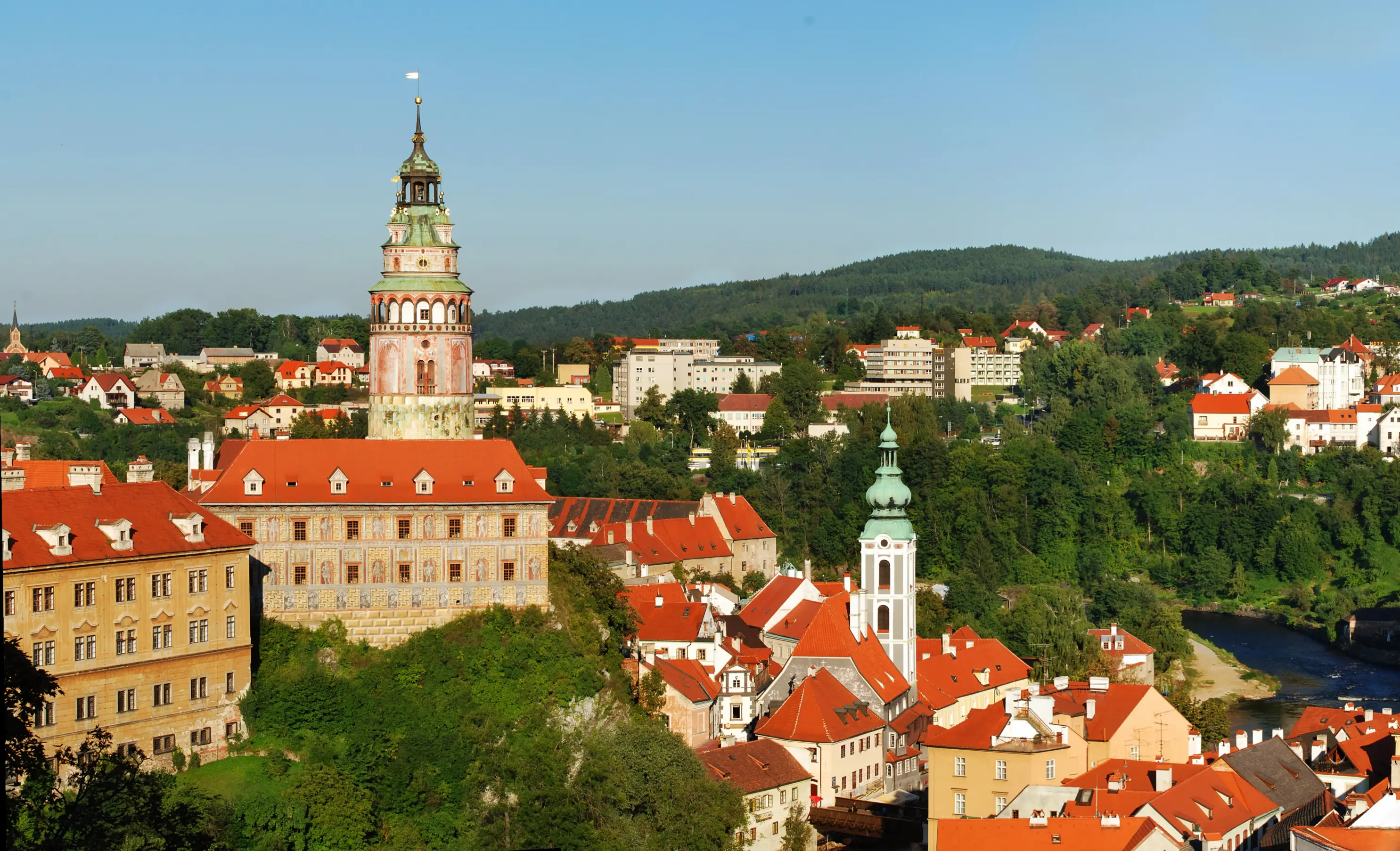
Cesky Krumlov
Cesky Krumlov is a charming little town in South Bohemia. It might be small, but it’s full of whimsical character and mystery. Walking through the narrow streets and across the bridge, the views of the medieval Cesky Krumlov Castle will take your breath away. At night, street musicians serenade visitors on the bridge where you can dance beneath the stars and the watchful eye of the magnificent tower. Dozens of unique local artisan shops, cafes, and restaurants are woven among the winding streets. In the summer, the city is lush with life and greenery. Rafters race down the river, stopping in the center along the way to enjoy a hearty meal before continuing their journey. In the winter, the main square transforms into a magnificent Christmas market and light blankets of snow cover the rooftops. This quaint little town will exceed your expectations and you may never want to leave.

Learn About Cesky Krumlov
Build Cesky Krumlov Trip
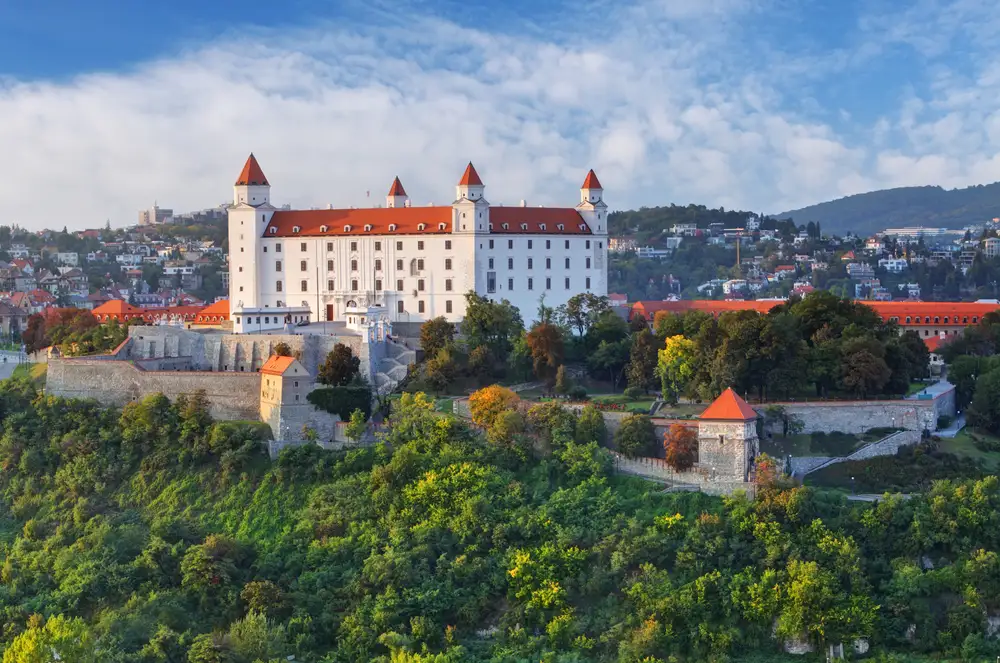
Bratislava
Bratislava is one of the most up-and-coming cities in central Europe. After years in the shadows of the Soviet bloc, and often drowned out by Prague, Bratislava has finally broken out. The Bratislavan region is now one of the richest per capita in the EU. This economic upswing has infused Bratislava with a newfound zeal. Trendy cafes and cool shopping centers are popping up everywhere, and the city’s already happening nightlife scene is only set to get better. Still less crowded than its central European neighbors Prague, Vienna, and Budapest, but just as intriguing, there’s really never been a better time for a visit to Bratislava. Ruled over by the Hungarians, Austrians, and most recently the Soviets, Bratislava is a city of strange contrasts. As soon as you arrive in Bratislava, you’ll see the pastel-hued churches, baroque houses, and the cobbled Old Town Square brush shoulders with modern brutalist buildings, retrofuturistic towers, and the clunky communist built UFO bridge. The city’s oldest building, its castle, is set atop the western edge of the Little Carpathian Hills like a trophy, the city’s hard-won main icon. For the first time in nearly a millennium, Bratislava has now seized control of its own destiny, and it shows.

Learn About Bratislava
Build Bratislava Trip
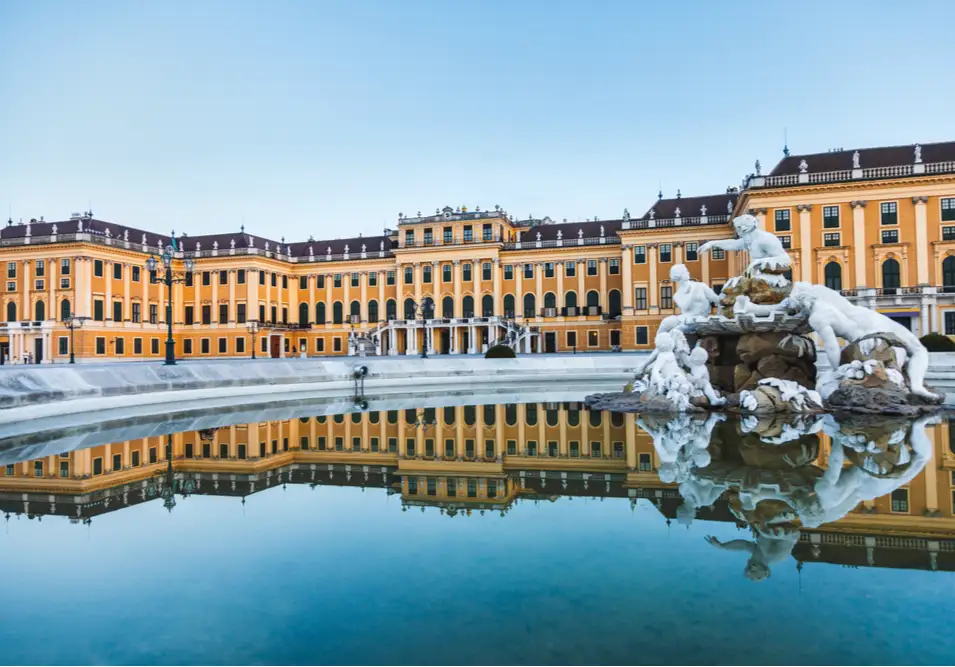
Vienna
Artistic and musical, historical and elegant, Vienna is the definition of class. The seat of the Habsburg monarchy for over six centuries, it's no wonder this city is still fit for royalty. Baroque buildings and imperial palaces dominate the cityscape, while locals stride gracefully through the streets, likely on their way to a classical music concert or art exhibition. Visitors from all over the world flock to Schonbrunn Palace, historical museums, and local eateries for authentic Viennese schnitzel. Vienna is also home to world-class wining and dining. Famous dishes include Wiener schnitzel, Tafelspitz (prime boiled beef), and apfelstrudel (apple strudel), all of which pair well with a glass of fine Austrian wine. No matter how long you spend in Vienna, you'll leave with a new appreciation for the finer things in life.

Learn About Vienna
Build Vienna Trip

Salzburg
You've probably heard this before— the city of Salzburg is straight out of a fairytale. Nestled in the mountains, this romantic city's Baroque architecture with colorful domes and spires is especially striking against the ancient fortress and Austrian Alpine backdrop. If you're looking for an amazing view, climb up to Hohensalzburg Fortress, Central Europe's largest intact fortress, for a jaw-dropping panorama of the city backed by misty mountains. Perhaps most famous for being the birthplace of the renowned composer Wolfgang Amadeus Mozart and the filming location for the classic The Sound of Music, this city has much to offer. Salzburg has become an important artistic and cultural center, featuring magnificent concert halls that uphold the city's tradition of classical music every day of the year, as well as acclaimed art exhibitions and museums. If you do it right, your visit to Salzburg will immerse you in the city's unforgettable atmosphere and keep you coming back for more.

Learn About Salzburg
Build Salzburg Trip
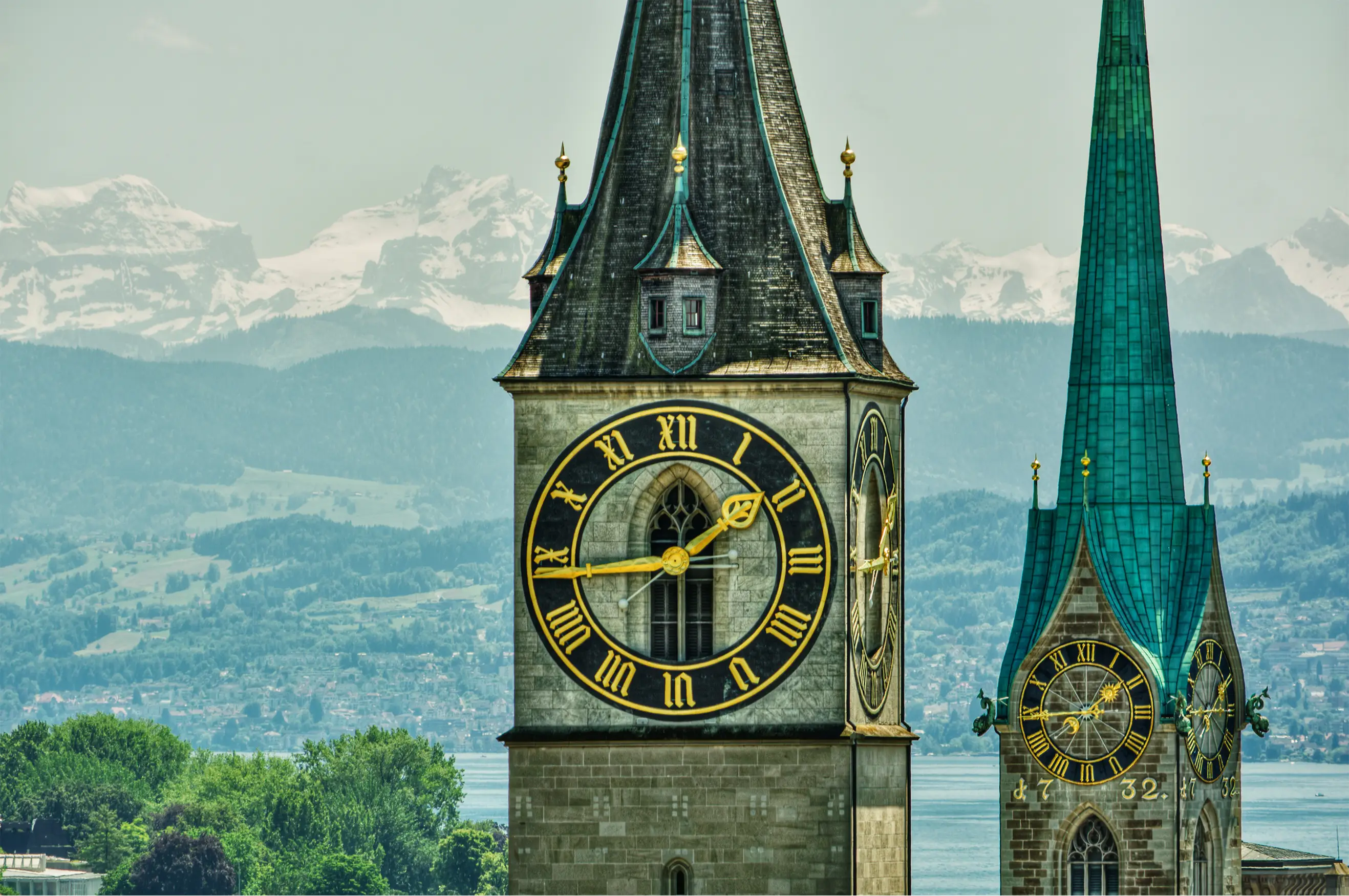
Zurich
Zurich is Switzerland’s biggest city, located in the center of the country’s German-speaking region. It’s this location, superbly connected to almost everywhere else by train and close to an international airport, that makes Zurich an obvious destination for tourists. Well, that’s one of the reasons. There’s also the city’s bevy of bars and restaurants, the lakeside views, and stunning architecture around every corner.Take a stroll down the Bahnhofstrasse, a street known around the world for its unrivaled shopping. Weave through crowds of shoppers as you pass rows of world-famous and exclusive brands. Zurich is a small city, but that just makes it easier to get around. Lindenhof Hill, a slight rise of land in the center, offers views across all of the town. Among the city’s most striking features are the Grossmünster towers, which can also be climbed. This is a proud, sophisticated, and elegant city.

Learn About Zurich
Build Zurich Trip

Interlaken
Located between two bodies of water — Lake Brienz and Lake Thun — Interlaken is the perfect place to explore the serene natural beauty at Switzerland’s heart. Interlaken is a place for those who seek adventure amid spectacular natural surrounds. Rock climbing, canyoning, bungee jumping, and paragliding are just some of the ways to fill a day here, and countless backpackers descend on the town every summer to do all of these and more. Less intense, but no less rewarding, are the many opportunities for hiking, sailing, and swimming. Or, take to the rails. At the nearby Kleine Scheidegg pass, a train runs through the snowy Swiss Alps to the highest train station on the continent. The fun here doesn’t stop at night. After a hard day of adventure, backpackers flock to the town’s many pubs and bars to soothe their aches and pains with steins of beer. Interlaken is a place where fun and excitement reign supreme and somewhere to experience Switzerland’s striking nature in the most thrilling way.

Learn About Interlaken
Build Interlaken Trip

Cesky Krumlov
Cesky Krumlov is a charming little town in South Bohemia. It might be small, but it’s full of whimsical character and mystery. Walking through the narrow streets and across the bridge, the views of the medieval Cesky Krumlov Castle will take your breath away. At night, street musicians serenade visitors on the bridge where you can dance beneath the stars and the watchful eye of the magnificent tower. Dozens of unique local artisan shops, cafes, and restaurants are woven among the winding streets. In the summer, the city is lush with life and greenery. Rafters race down the river, stopping in the center along the way to enjoy a hearty meal before continuing their journey. In the winter, the main square transforms into a magnificent Christmas market and light blankets of snow cover the rooftops. This quaint little town will exceed your expectations and you may never want to leave.

Learn About Cesky Krumlov
Build Cesky Krumlov Trip

Bratislava
Bratislava is one of the most up-and-coming cities in central Europe. After years in the shadows of the Soviet bloc, and often drowned out by Prague, Bratislava has finally broken out. The Bratislavan region is now one of the richest per capita in the EU. This economic upswing has infused Bratislava with a newfound zeal. Trendy cafes and cool shopping centers are popping up everywhere, and the city’s already happening nightlife scene is only set to get better. Still less crowded than its central European neighbors Prague, Vienna, and Budapest, but just as intriguing, there’s really never been a better time for a visit to Bratislava. Ruled over by the Hungarians, Austrians, and most recently the Soviets, Bratislava is a city of strange contrasts. As soon as you arrive in Bratislava, you’ll see the pastel-hued churches, baroque houses, and the cobbled Old Town Square brush shoulders with modern brutalist buildings, retrofuturistic towers, and the clunky communist built UFO bridge. The city’s oldest building, its castle, is set atop the western edge of the Little Carpathian Hills like a trophy, the city’s hard-won main icon. For the first time in nearly a millennium, Bratislava has now seized control of its own destiny, and it shows.

Learn About Bratislava
Build Bratislava Trip

Vienna
Artistic and musical, historical and elegant, Vienna is the definition of class. The seat of the Habsburg monarchy for over six centuries, it's no wonder this city is still fit for royalty. Baroque buildings and imperial palaces dominate the cityscape, while locals stride gracefully through the streets, likely on their way to a classical music concert or art exhibition. Visitors from all over the world flock to Schonbrunn Palace, historical museums, and local eateries for authentic Viennese schnitzel. Vienna is also home to world-class wining and dining. Famous dishes include Wiener schnitzel, Tafelspitz (prime boiled beef), and apfelstrudel (apple strudel), all of which pair well with a glass of fine Austrian wine. No matter how long you spend in Vienna, you'll leave with a new appreciation for the finer things in life.

Learn About Vienna
Build Vienna Trip

Salzburg
You've probably heard this before— the city of Salzburg is straight out of a fairytale. Nestled in the mountains, this romantic city's Baroque architecture with colorful domes and spires is especially striking against the ancient fortress and Austrian Alpine backdrop. If you're looking for an amazing view, climb up to Hohensalzburg Fortress, Central Europe's largest intact fortress, for a jaw-dropping panorama of the city backed by misty mountains. Perhaps most famous for being the birthplace of the renowned composer Wolfgang Amadeus Mozart and the filming location for the classic The Sound of Music, this city has much to offer. Salzburg has become an important artistic and cultural center, featuring magnificent concert halls that uphold the city's tradition of classical music every day of the year, as well as acclaimed art exhibitions and museums. If you do it right, your visit to Salzburg will immerse you in the city's unforgettable atmosphere and keep you coming back for more.

Learn About Salzburg
Build Salzburg Trip

Zurich
Zurich is Switzerland’s biggest city, located in the center of the country’s German-speaking region. It’s this location, superbly connected to almost everywhere else by train and close to an international airport, that makes Zurich an obvious destination for tourists. Well, that’s one of the reasons. There’s also the city’s bevy of bars and restaurants, the lakeside views, and stunning architecture around every corner.Take a stroll down the Bahnhofstrasse, a street known around the world for its unrivaled shopping. Weave through crowds of shoppers as you pass rows of world-famous and exclusive brands. Zurich is a small city, but that just makes it easier to get around. Lindenhof Hill, a slight rise of land in the center, offers views across all of the town. Among the city’s most striking features are the Grossmünster towers, which can also be climbed. This is a proud, sophisticated, and elegant city.

Learn About Zurich
Build Zurich Trip
prev
next


 Map of Your Itinerary Route
Map of Your Itinerary Route
Zoom In to the cities to see your itinerary in more detail


 4.8
4.8 






